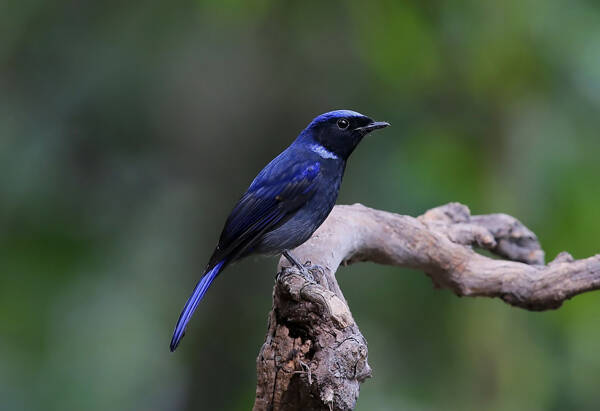Niltava grandis
IUCN
LCBasic Information
Scientific classification
- name:Niltava grandis
- Scientific Name:Large Niltava,Niltava grandis
- Outline:Songbird
- Family:Passeriformes Flycatcher
Vital signs
- length:20-21cm
- Weight:36-38g
- lifetime:No verification information
Feature
The difference between the female and the Rufous-bellied Flycatcher is that they have different body shapes and do not have a white neck stripe.
Distribution and Habitat
Distributed in Bangladesh, Bhutan, Cambodia, China, India, Indonesia, Lao People's Democratic Republic, Malaysia, Myanmar, Nepal, Thailand, Vietnam.
The nominate subspecies breeds at an altitude of more than 2,000 meters in southeastern Tibet, China; the Yunnan subspecies breeds in southeastern Yunnan. Wintering birds go down to lowlands.
It mainly inhabits evergreen broad-leaved forests, bamboo forests and secondary forests. In winter, it is mostly active in low mountains and forest margins at the foot of the mountain. In summer, it can go up to evergreen broad-leaved forests and mixed forests at an altitude of 2,000-2,500 meters.
Appearance
The male Great Flycatcher has a brilliant cobalt blue spot from the top of the head to the occipital, waist, upper tail coverts, small wing coverts and neck sides, dark purple-blue back, black forehead, eye front, cheek, ear coverts and head sides, purple-blue tail feathers in the center, and the rest of the tail feathers are black, with purple-blue outer vanes, black upper coverts and flight feathers, and purple-blue feather edges. The chin, throat and upper chest are black, gradually turning into dark blue-purple or blue-black on the lower chest, upper abdomen and flanks, blue-gray underbelly and tail coverts, white feather edges on the undertail coverts, and black leg coverts.
The female has a rusty brown forehead, olive brown or brown-gray top of the head, gradually turning into blue-gray brown from the back of the head to the back of the neck, brown or tea-yellow brown cheeks, eye front, ear coverts and head sides, with fine white feather shaft patterns. The back, shoulders, wa
Details
The foreign name of the large niltava is Large Niltava, and there are 4 subspecies.

The large niltava often moves alone or in pairs, is bold, and is not very afraid of people. It is mostly in the undergrowth and small trees under the forest, and also frequently moves and forages on the ground. The call is an elegant k'tu-tu-ti sound followed by three clear rising whistles; it also emits a scolding-like beep and a nasal sound dju-ee.
The Great Flycatcher mainly feeds on insects and insect larvae of the Coleoptera, Lepidoptera, Orthoptera, and Hymenoptera. It also eats other invertebrate foods such as locusts, beetles, and spiders.
The breeding season of the Great Flycatcher is from May to July. It usually nests in various caves on the shore and rock slopes, and also in tree holes. The nest is cup-shaped, made of moss all over the moon, and padded with fine roots. Each nest usually contains 3-5 eggs, which are milky white or khaki, sometimes with fine pink-brown spots, and the size of the eggs is 20.4-26.1 mm × 16.0-19.0 mm. The chicks are late-maturing.
Listed in the "Red List of Endangered Species of the World Conservation Union" (IUCN) 2016 ver 3.1-Least Concern (LC).
Listed in the second level of China's "National Key Protected Wildlife List" (February 5, 2021).
Protect wild animals and stop eating game.
Maintaining ecological balance is everyone's responsibility!








